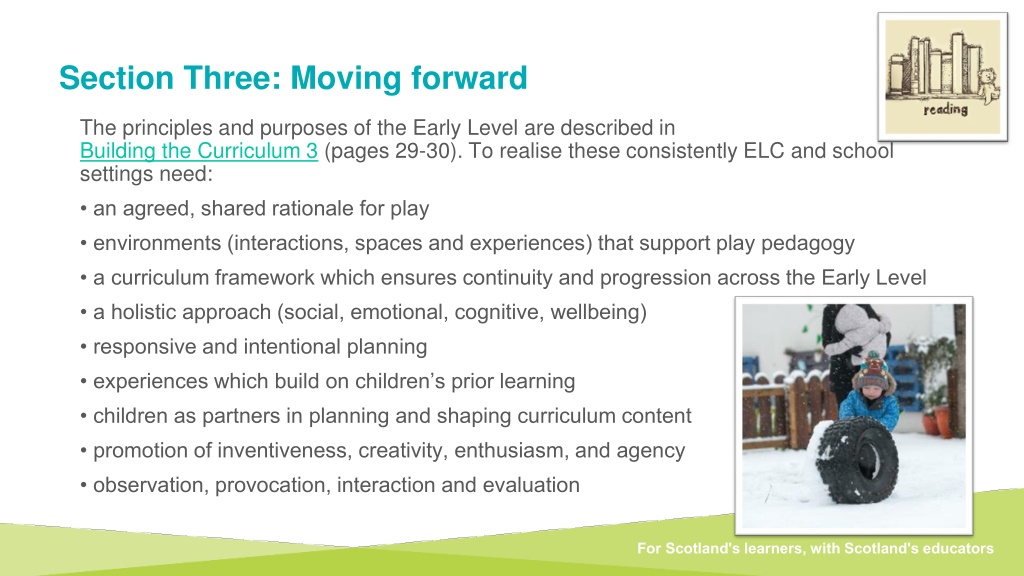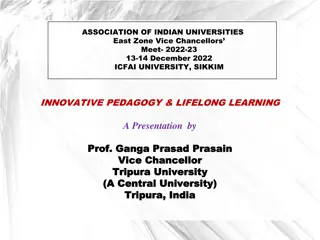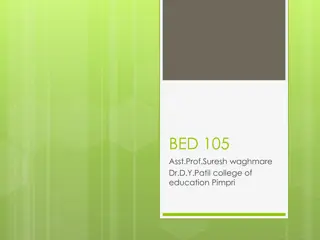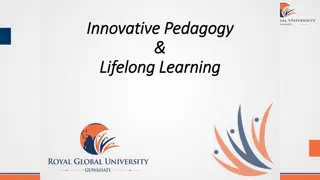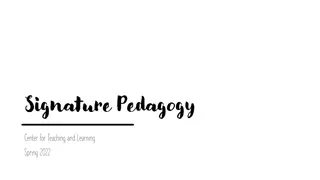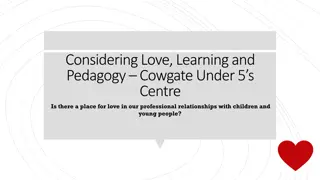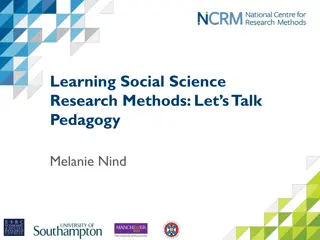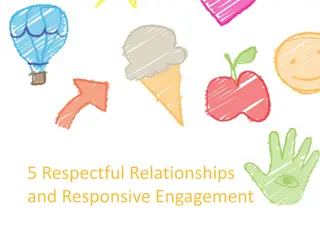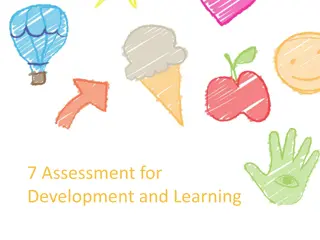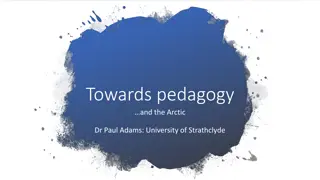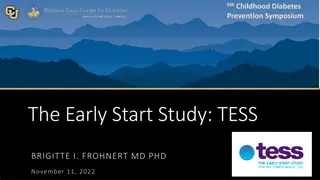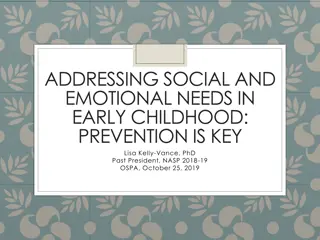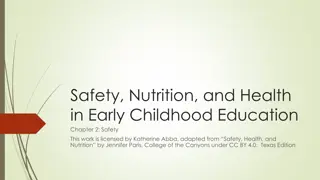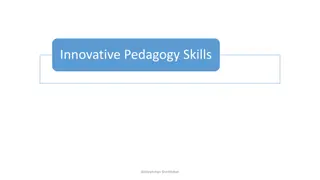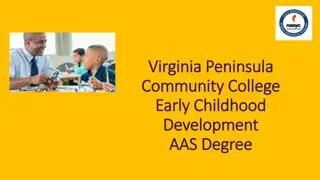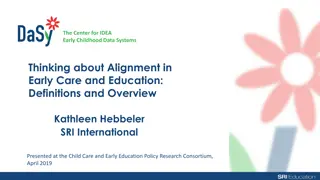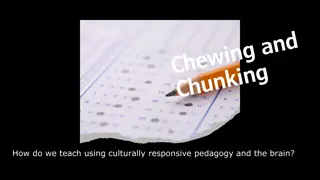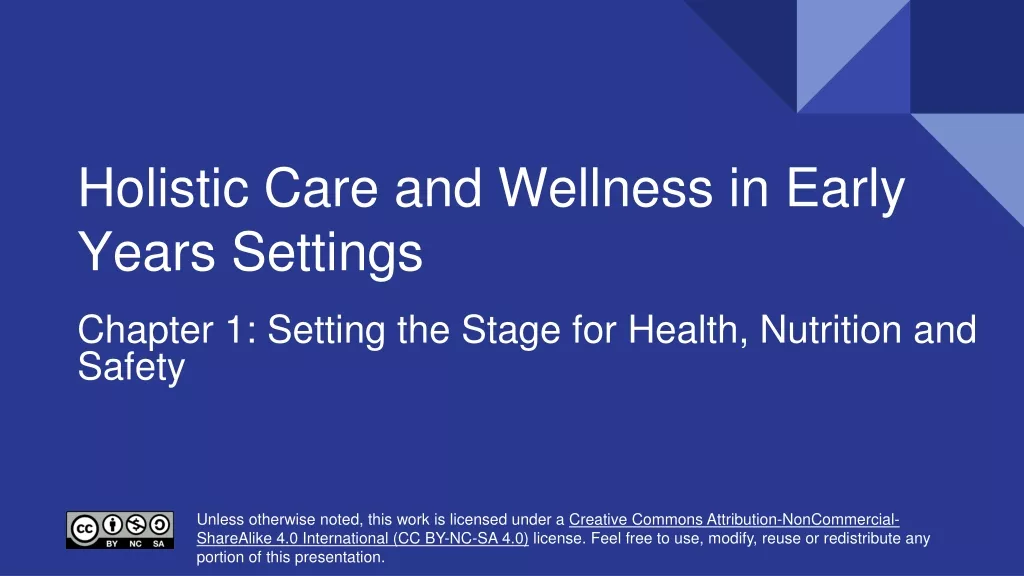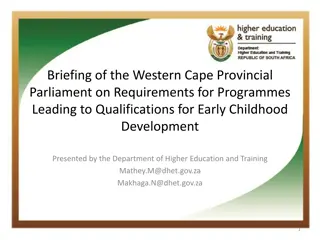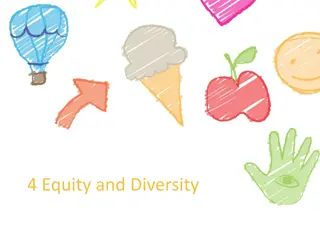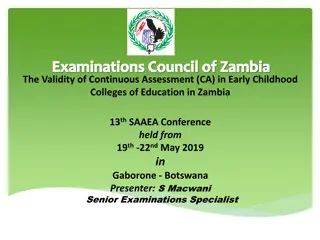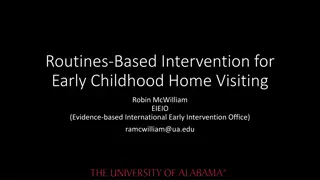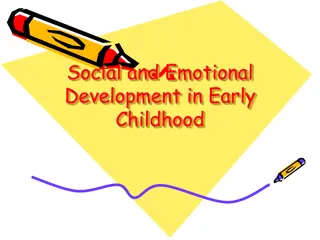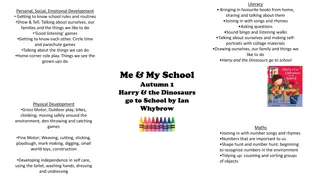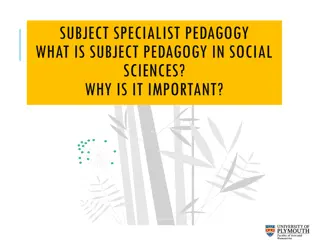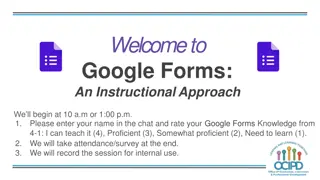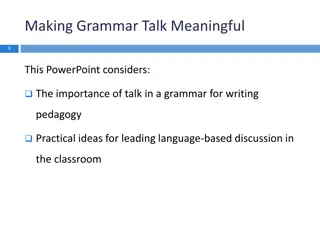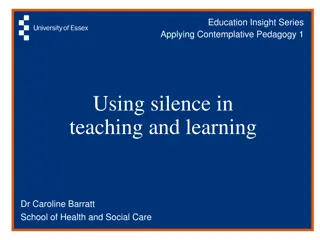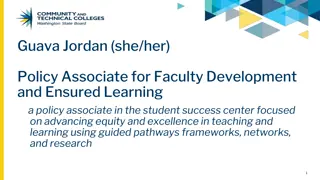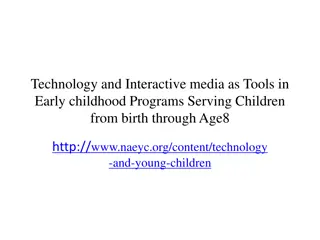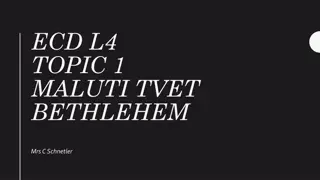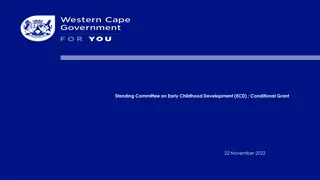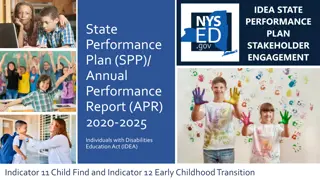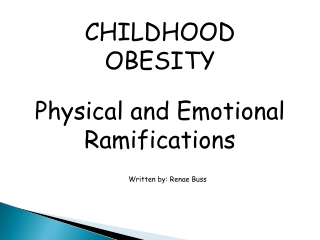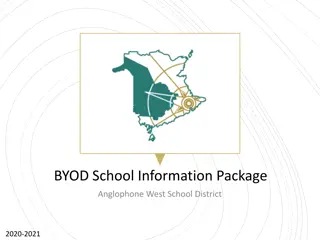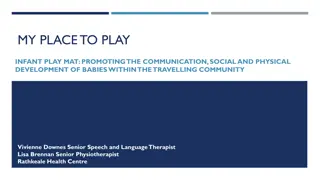Implementing Play Pedagogy in Early Childhood Education
This content emphasizes the importance of starting from the child's needs, interests, and understandings to create high-quality learning experiences in early childhood education settings. It discusses the principles and purposes of the Early Level in Scotland, highlighting the need for a shared rationale for play environments, a holistic approach, and responsive planning to support children's development. The implementation of play pedagogy, observation, intentional planning, and assessment is crucial for promoting children's learning and well-being.
- Early Childhood Education
- Play Pedagogy
- Child-Centered Learning
- Scotland Educators
- Holistic Approach
Download Presentation

Please find below an Image/Link to download the presentation.
The content on the website is provided AS IS for your information and personal use only. It may not be sold, licensed, or shared on other websites without obtaining consent from the author. Download presentation by click this link. If you encounter any issues during the download, it is possible that the publisher has removed the file from their server.
E N D
Presentation Transcript
Section Three: Moving forward The principles and purposes of the Early Level are described in Building the Curriculum 3 (pages 29-30). To realise these consistently ELC and school settings need: an agreed, shared rationale for play environments (interactions, spaces and experiences) that support play pedagogy a curriculum framework which ensures continuity and progression across the Early Level a holistic approach (social, emotional, cognitive, wellbeing) responsive and intentional planning experiences which build on children s prior learning children as partners in planning and shaping curriculum content promotion of inventiveness, creativity, enthusiasm, and agency observation, provocation, interaction and evaluation For Scotland's learners, with Scotland's educators
Starting From The Child The only people who give practitioners consistent, accurate feedback about what is relevant, meaningful and purposeful early education are the children. Starting from the child is not an empty mantra. If early childhood educators start from the children their needs, interests and understandings then they will be secure in knowing that their teaching is likely to lead to higher quality learning. If educators then observe and assess children meticulously, then they will have evidence about what works in their classrooms and for the individuals within it, and what does not. In this way, early childhood professionals will have an evidence base that is sufficiently roust to enable them to counter the worst excesses of external demands. Julie Fisher (2013) For Scotland's learners, with Scotland's educators
Implementing Play Pedagogy Observation and documentation of learning responsive and intentional planning, assessment and evaluation observation and documentation of learning What do the children s actions, emotions and words tell you about what they require from you and others in terms of interactions, experiences, and the different spaces they need to grow and develop in every way? implementation For Scotland's learners, with Scotland's educators
Implementing Play Pedagogy Responsive and intentional planning, assessment and evaluation How does this knowledge of the child inform your planning in terms of interactions, experiences and spaces? Are you ensuring the right balance of both responsive and intentional planning to meet the children s needs? How effectively does information from parents support your pedagogical approaches? What needs to remain to reinforce learning? What needs to change to inspire and extend learning? responsive and intentional planning, assessment and evaluation observation and documentation of learning implementation For Scotland's learners, with Scotland's educators
Implementing Play Pedagogy Implementation responsive and intentional planning, assessment and evaluation observation and documentation of learning Sensitive interactions honing the skill of stepping in or stepping back Flexible experiences learning from the child to inform practice Variety of spaces outdoors and inside implementation For Scotland's learners, with Scotland's educators
Look again at the statements in relation to each part of the cycle. Take time to think about and discuss with others: Implementing Play Pedagogy responsive and intentional planning, assessment and evaluation how and to what extent does this model reflect your current approach to supporting children s progress? the strengths of your current approach are there aspects of the model you need to develop further in your own practice and across your early level provision? what are the current barriers to this and how can you overcome them? observation and documentation of learning implementation For Scotland's learners, with Scotland's educators
Self-Evaluation for Self-Improvement How Good is our Early Learning and Childcare? provides a framework for self-evaluation for practitioners in ELC and the early years of primary school. Pedagogy and play features in a number of the quality indicators, particularly in 2.2 Curriculum and 2.3 Learning, teaching and assessment. Our practitioners are confident and knowledgeable. In their practice, they demonstrate their deep understanding of the critical role of play in promoting children s development and learning. p26 Children contribute effectively to the setting and in its community in purposeful and innovative ways. They enjoy and are actively involved in learning through spontaneous play opportunities p28 For Scotland's learners, with Scotland's educators
Self-Evaluation for Self-Improvement The illustrations, features of highly effective practice, and challenge questions should be used to answer the questions at the heart of self-evaluation: How are we doing? How do we know? and What are we going to do now? For Scotland's learners, with Scotland's educators
Self-evaluation for self-improvement On your own or with others consider the quality indicators related to pedagogy and play within How Good is our Early Learning and Childcare? What do these tell you about your knowledge and understanding and the quality of provision in your setting, and across the Early Level? For Scotland's learners, with Scotland's educators
Self-evaluation for self-improvement The Transforming Learning approach is aimed at empowering transformational change and leadership at all levels. It offers a framework which allows practitioners to agree transformational change actions and follow them through to successful completion over one to three years. Once you are familiar with the relevant quality indicators in How Good is our Early Learning and Childcare , take time to consider each of the prompts on the Scanning and Scoping Cycle. What does your discussion tell you about what you need: to stop doing? to keep doing? to do next in the short and longer term?
Reflective questions What is the role of the practitioner/teacher in planning and enacting the Early Level as intended? A play-based curriculum How and to what extent do children in your ELC or school setting co-construct learning and create the physical environment? How do you ensure that curriculum planning is responsive to the needs of the child, building on what the child already knows and can do? Is there a willingness to embrace play-based pedagogy your ELC or school setting at all levels? How do you know? What forms of collaboration exist between practitioners and teachers across the Early Level? And parents/partners?
Moving Forward To continue with the toolkit move on to SWAY presentation: Further Reading.
